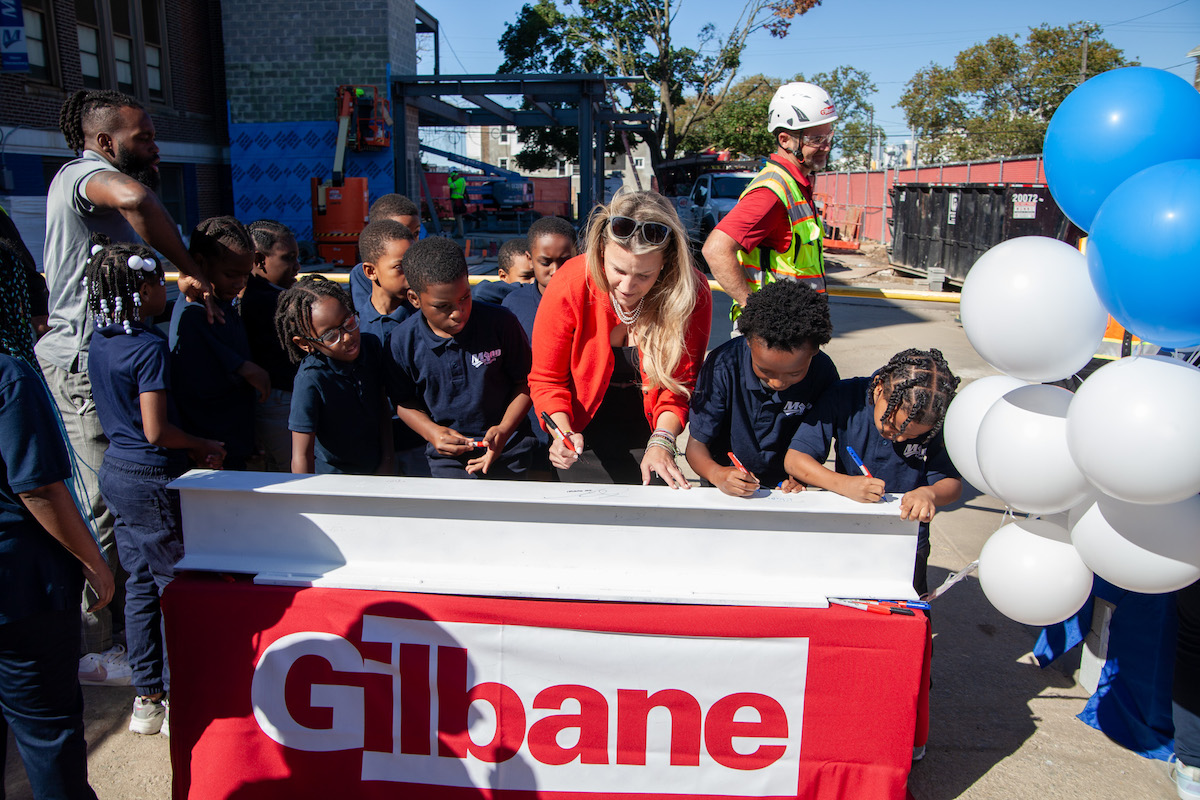“The traffic is already there in Hamilton County, so we need to improve and increase capacity wherever we can,” said Kathleen Fuller, Public Information Officer for ODOT. “These MCE projects will ultimately tie into others in the I-75 corridor to really improve safety and traffic flow.”
Funded with federal and state dollars allocated by Ohio’s Transportation Review Advisory Council, the Mill Creek Expressway project will widen and resurface nearly eight-and-a-half miles of I-75, with extensive safety improvements at five interchanges. Through most of the corridor, the work provides the first full-depth replacement since the original interstate construction 65 years ago.
ODOT anticipates the last phase of the Mill Creek Expressway project will finish in 2025, subject to funding availability. Eventually it will link two other upcoming mega projects on I-75 in Hamilton County – the Brent Spence Corridor project to the south and the Thru the Valley project to the north.
To deal with that challenge, ODOT split the project into 10 phases, all bid separately. (See “Years in the Making” sidebar for details of each phase.) Budgets ranged from $6.8 million to an estimated $120 million for the last phase, anticipated to start in 2022.

| Your local Trimble Construction Division dealer |
|---|
| SITECH Allegheny |
| SITECH Northeast |
As an added benefit, “Staggering the work over the long-term allowed better maintenance of traffic,” Fuller said.
Instead of working from one end to the other, “The order of projects was determined to allow for critical improvements and projects with fewer environmental and utility conflicts to be constructed earlier or more quickly,” Fuller explained.
In the first seven phases, ODOT used traditional design-bid-build delivery. For the current work (phase 5A) and the next phase (5B), “Based on the amount of funding available and the schedule, the only option was design-build,” Fuller said.
“A lot of this project is pretty standard – just on a larger scale with the amount of work,” said Chris Tuminello, P.E., ODOT’s Project Engineer. “There’s a lot of structure, drainage, and roadway work, including some full-depth reconstruction. We’re redoing multiple bridges and miles of interstate.”
One of the biggest challenges comes from three active railroad lines – two run by CSX and one by Norfolk Southern. “They’re some of the busiest rail lines in the country, so whether we’re working over the top of the railroad for structures or jacking and boring drainage conduit underneath, it takes some coordination,” Tuminello said.

| Your local Trimble Construction Division dealer |
|---|
| SITECH Allegheny |
| SITECH Northeast |
To ensure safety, “When we work overhead, there are extra measures like false decking or ballast protection,” Tuminello said. “The additional steps protect the assets of the railroad, as well as our people.”
Phasing and adjusted work schedules also help avoid problems. For instance, “When we do our jack and bore of conduit underneath the railroad, crews usually work 24 hours a day, seven days a week until that’s complete,” Tuminello added. “We don’t want to pause and have a chance of something unexpected happening.”
In other areas, though, “We’ve had some site issues due to the fact that the interstate was originally built in the 1950s and 1960s on ground that was City of Cincinnati neighborhoods,” Tuminello said. “Any time you work in big urban areas, what you find underground could be surprising, but it hasn’t caused major problems for this project.”
To help control costs, ODOT chose to mill and fill existing lanes in one section of roadway, rather than the full-depth reconstruction specified for the rest of this phase. “There are approximately 10 inches of concrete, covered by seven inches of asphalt from the original roadway and subsequent overlays,” Tuminello explained. “In the part that was in better condition, we decided to leave that concrete base and do the mill and fill on top of it.”
With Walsh Construction scheduled to finish phase 5A in summer 2022, “There will be a little overlap, but with the new contract being design-build, a lot of their up-front work will be design,” Tuminello said.

| Your local Trimble Construction Division dealer |
|---|
| SITECH Allegheny |
| SITECH Northeast |
However, as part of the 5B project, Duke Energy will relocate some large towers and high-voltage lines. “They’ll hopefully start that this fall,” Tuminello said. “It’s pretty significant relocation work, so there will be some coordination with Walsh Construction.”
ODOT anticipates the final piece of the Mill Creek Expressway project – phase 8, estimated at $120 million – will start construction in 2022 and finish in 2025.
- Phase 1 – John R. Jurgensen Company, of Cincinnati, started summer 2011 and finished fall 2013; $53.7 million contract included reconstructing an interchange and working on associated mainline and ramps.
- Phase 2 – Great Lakes Construction Co., of Cincinnati, started spring 2010 and finished fall 2010; $6.8 million contract included replacing one overpass and removing another, as well as converting a section of roadway to a through street.
- Phase 3 – John R. Jurgensen started winter/spring 2012 and finished fall 2013; $13.1 million contract included realigning an intersection, adding a new ramp, and eliminating some existing ramps.
- Phase 4 – Kokosing Construction Company, Inc., of Westerville, Ohio, started winter/spring 2013 and finished summer 2016; $90.6 million contract included widening and resurfacing a section of I-75, reconstructing an interchange, and removing a pedestrian bridge.
- Phase 5A – Walsh Construction started fall 2018 and is scheduled to finish fall 2022; $87 million contract includes widening a section of I-75 and improving the connection of I-74 eastbound to I-75.
- Phase 5B – Anticipated to start in summer 2021 and finish in 2024; estimated $95 million contract will include work on I-74 as part of I-75 interchange reconstruction, as well as improving I-75 ramps to I-74 west.
- Phase 6 – Kokosing Construction started summer 2013 and finished fall 2015; $22 million contract included replacing railway bridge over I-75.
- Phase 7 – John R. Jurgenson started summer 2014 and finished fall 2017; $29.6 million contract included reconstructing and widening a section of I-75, as well as reconstructing ramps and a bridge.
- Phase 8A – Great Lakes Construction started summer 2017 and finished spring 2019; $7.8 million contract included replacing one bridge and reconstructing portions of another.
- Phase 8 – Anticipated to start in 2022 and finish in 2025; estimated $120 million contract will include widening I-75, rehabilitating existing pavement and bridges, reconstructing one interchange, removing another interchange, completing improvements to a third interchange, and tying into existing ramps.

































































